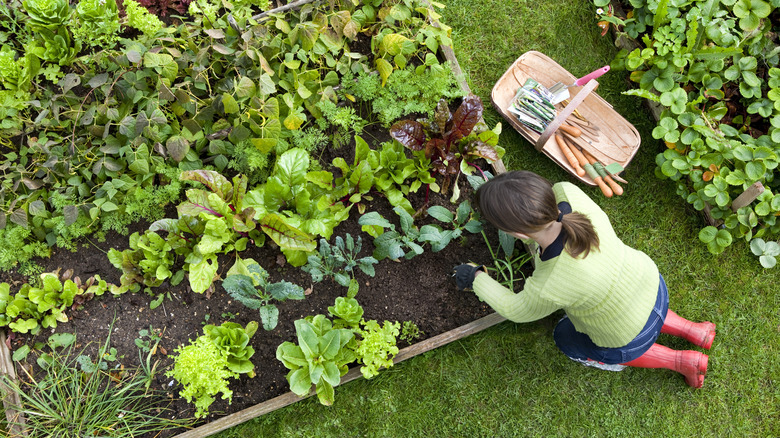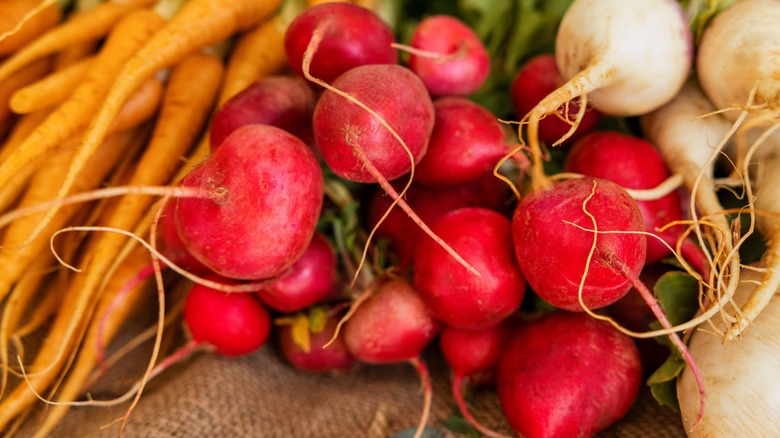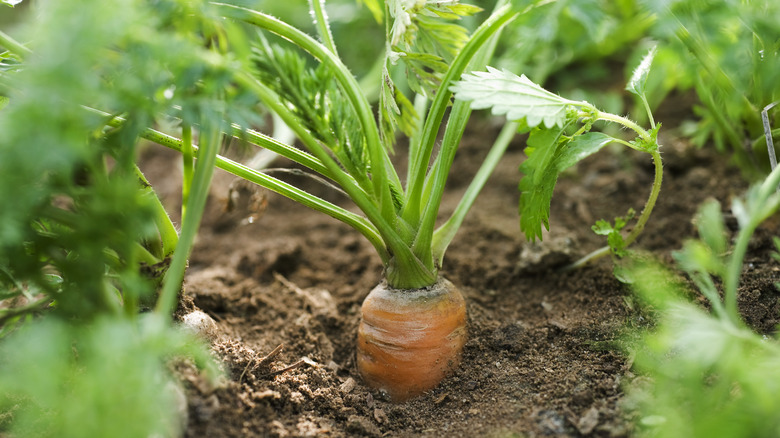Vegetables That Grow Underground (And Tips For A Successful Root Garden)
Vegetable gardening is typically thought of as a summer undertaking. However, there is a way that you can continue to grow your own delicious, nutritious food well into the cool season: a root garden. Root vegetables — as their name would suggest — are vegetables with edible roots, tubers, rhizomes, or bulbs. Common examples of popular root vegetables include potatoes, carrots, onions, beets, and parsnips. Many root veggies are especially cold-hardy vegetables you can plant in your garden in spring or even late winter.
If you've never tried growing a root garden before, it might be a good idea for you to start off with just a few beginner-friendly root vegetables that are particularly easy to successfully grow. Once you've mastered this handful of basic beginner root veggies, you might find yourself deciding to expand your root vegetable growing powers the following gardening season. Consider this your guide to planning and executing your very own successful root garden over the next cool weather season.
Beginner-friendly root vegetables
In a traditional summer vegetable garden, there are a few basic veggies — like cucumbers, strawberries, and tomatoes — that are considered very easy to grow and, therefore, friendly for even the most novice gardeners. The same is true for root vegetables. If you're specifically looking to expand your vegetable gardening into the cooler seasons, consider starting with radishes, carrots, and beets. All three will thrive when planted in late winter or early spring and under the same conditions: full sun exposure and loose, well-draining soil.
If you're interested in adding some root vegetables to your warmer season vegetable garden, potatoes can make an excellent option. While they should be planted in early spring, most potatoes won't be ready for harvesting until summer (depending on the variety). Other than their warm weather preference, these tubers thrive in the same conditions as beets, radishes, and carrots, preferring ample sun and soil with good drainage.
How to start and care for a root garden
As a general rule, root vegetables require very loose and well-draining soil that isn't compacted by walking on it. Due to this requirement, it is highly recommended to grow them in raised garden beds, which will prevent soil compaction. For growing root vegetables, your beds should be between 8 inches and 10 inches tall and less than 3 feet wide. You can build your beds as long as you'd like, but keep in mind that a smaller crop might be easier to handle, if you're a true beginner.
If your soil is not well-draining, consider adding some sand to your beds. Once you have loose, fluffy mounded soil, you may wish to perform a DIY soil test to determine whether or not to add nutrients or otherwise alter your soil. Root vegetables flourish in soil that is higher in potassium and phosphorus than in nitrogen, and soil that has a pH of 6 to 6.5. After your soil meets these requirements, you're ready to plant. Water your root vegetables deeply multiple times each week and be sure to remain vigilant with weeding — and you'll have a delicious root veggie harvest on your hands before you know it.


